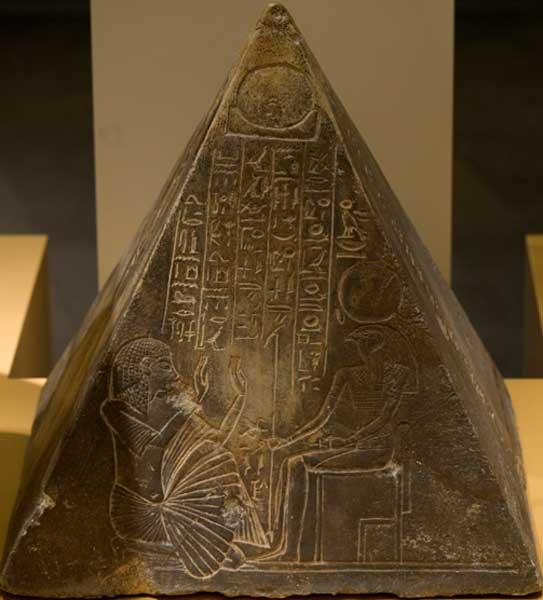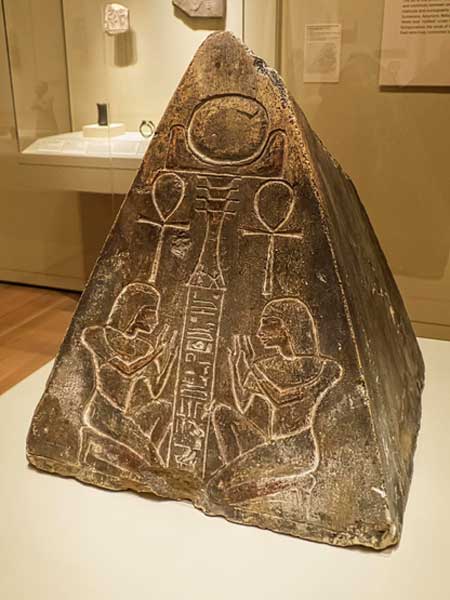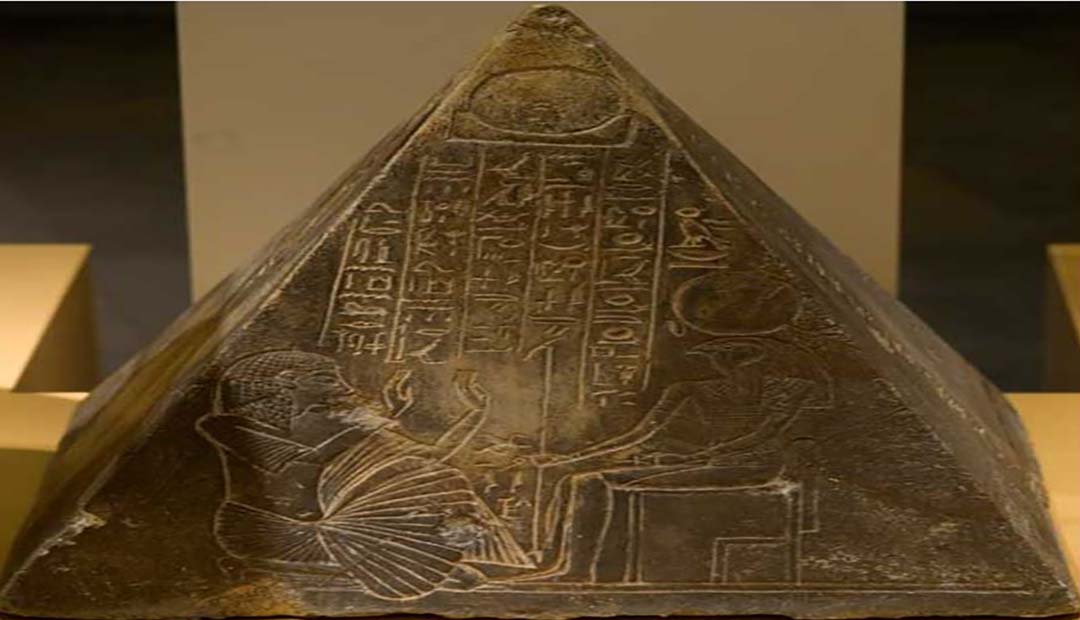The Mythical Benben Stone: Unveiling the Landing Site of Egyptian God Atum
The Benben Stone is an entity found in ancient Egyptian mythology. The legendary stone was once kept in a shrine within the compounds of the temple of the deity Atum in Heliopolis.
The stone of Benben is also an architectural term and is called the top of the obelisk or capstone of a pyramid. This architectural characteristic is also known as a pyramidion (or plural pyramidia).
There are many accounts of the development of the universe in the myths of ancient Egypt. One centered on the god Atum and originally came from the city of Heliopolis. According to this version of the creation story, the universe was brought into being by Atum.
There was nothing in the beginning but darkness and confusion. The primordial hill, known as the stone of Benben, stands on top of it from the dark waters. As the stone Benben rose in primeval waters, it has been suggested that this word is associated with the verb ‘weben’, which is the Egyptian hieroglyph for ‘to rise’.

According to another interpretation, the Benben stone was the primeval hill on which Atum first landed. The god looked around and realized that there was nothing around him but darkness and chaos and that he was all alone. Desiring companionship, Atum began the work of creation.
In some versions of the myth, Atum masturbated, and through this accreated Shu (the god of air) and Tefnut (the goddess of moisture). In other versions of the story, these deities were created by Atum’s copulation with his own shadow.
Shu and Tefnut left Atum on the Benben stone and went away to create the rest of the world. After some time, Atum is said to have grown worried about his children. Removing his eye, he sent it in search of them. Shu and Tefnut returned with their father’s eye, and the deity, seeing his children return, shed tears of joy. These teardrops, which fell on the Benben stone that Atum was standing on, transformed into human beings.
The Benben stone is also recorded to have been a sacred object that was once kept in the special shrine known as the ‘hwt benben’, which translates as ‘House of the Benben’. This sacred relic was the innermost sanctuary of the temple in Heliopolis, where Atum once served as its chief deity.
The original cult object is said to have been lost at some point of time in history. Nevertheless, based on pictorial evidence, it has been suggested that this was an upright stone with a rounded top. It has also been pointed out that later on, other solar temples would also have their own Benben stones. For example, the temple of Aten in El-Amarna / Akhetaten, which was built by the 18th Dynasty pharaoh, Akhenaten, during the 14th century B.C., is recorded to have possessed a Benben stone of its own.

Apart from being the name of a cult object, the Benben stone is also used to describe a type of ancient Egyptian architectural element. To the ancient Egyptians, this was known as a ‘benbenet’ (the feminine form of ‘benben’), whereas for people today, the stone is known also as a pyramidion.
This term is used to describe the capstone that was placed either on the top of a pyramid or on the top of an obelisk. It has been said that in the case of the former, the pyramidion is often covered with electrum or gold. Examples of pyramidions have survived and may be found in museums. One, for instance, is the pyramidion that once topped the 12th Dynasty Pyramid of Amenemhat III, which is today displayed in the Egyptian museum in Cairo.




